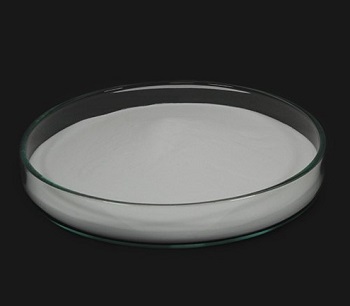|
|
| | Lithium titanate, nanopowder Chemical Properties |
| | Lithium titanate, nanopowder Usage And Synthesis |
| Description | Lithium Titanate / lithium titanium oxide (Li4Ti5O12, spinel, “LTO”) is an electrode material with exceptional electrochemical stability. It is often used as the anode in lithium ion batteries for applications that require high rate, long cycle life and high efficiency. LTO-based batteries are considered safer and have a wider operating temperature range.

| | Uses | Lithium titanate is the anode component of the fast recharging lithium-titanate battery. It is also used as an additive in porcelain enamels and ceramic insulating bodies based on titanates. It is frequently utilized as a flux due to its good stability. The advantages of Lithium Titanate Oxide (lithium titanium oxide) battery technology are significant and the whole LTO technology is a game-changer for the entire battery industry. The LTO is bringing a new dimension of possibilities for the energy storage with a number of economical as well as ecological aspects. With applications in many sectors, with a primary focus on high speed charging and energy storage, Lithium Titanate Oxide (lithium titanium oxide) technology is the future of battery-powered technology.
| | Battery Materials | Lithium titanate has already become one of the most attractive anode materials for lithium-ion batteries (LIBs), due to the zero-strain insertion, high safety, and excellent cycle stability. Li2TiO3 is used in the cathode of some lithium-ion batteries, along with an aqueous binder and a conducting agent. The lithium-titanate battery is a rechargeable battery that is much faster to charge than other lithium-ion batteries. It differs from other lithium-ion batteries because it uses lithium-titanate on the anode surface rather than carbon. The lithium-titanate battery is currently being used in battery electric vehicles and other specialist applications.
| | Matrials properties | Lithium titanate material known as zero-strain material has a spinel structure, cell volume of which will shrink after multiple cycles. In addition, lithium titanate battery doesn’t have solid electrolyte interphase (SEI), which avoids capacity fade and thus, has a longer life as a result. In the application of energy system, batteries are always used for storing energy but not charging or discharging.
| | Effect and benefit | The effect and benefit of this alteration and inclusion of lithium-titanate nanocrystals is that the surface area of the anode of the Lithium-Titanate battery is about 100 square meters per gram in contrast to the only 3 square meters per gram that Li-Ion batteries hold. The result of the lithium-titanate nanocrystals with their enlarged surface area is that electrons are able to enter and leave the anode much more rapidly, leading to fast recharging and enhanced lifetimes of the battery. Lithium Titanate batteries' benefits range from long lifetime to enhanced safety, low-temperature performance and large potential for integration with energy storage solutions.
| | Synthesis | In a typical synthesis, 200 mL ethanol was mixed with 1 mL of 0.1 M KCl solution and used as the solvent. Then 8.8 g tetrabutyl titanate was added dropwise into the solvent under continuous sonication for 10 min at ambient temperature. A white precipitate formed immediately. Then the suspension was stirred at a moderate speed for 6 h. After stirring, the precipitate was collected by centrifugation and washed by ethanol and deionized water for serious times. The washed precipitate (denoted as Ta) was dried at 60°C in the oven.
Then, 0.2 g of Ta was mixed with 2.55 mmol LiOHH2O in 25 mL ethanol-water (1 : 1 in volume) mixed solution. The resulting mixture was transferred into a 40 mL teflon-lined stainless steel autoclave and then placed in an oven at 180°C for 36 h. After the autoclave was cooled to room temperature, white powders (denoted as Tb) were collected and washed by ethanol and de-ionized water for several times to remove redundant LiOH. After drying at 60°C for 12 h, the obtained powders were sintering at 600°C, 700°C, and 800°C for 1 h in air, which were denoted as LTO600, LTO700, and LTO800, respectively.
| | Chemical Properties | white powder(s); has strong fluxing properties at low concentrations for use in titanium-bearing enamels [HAW93] | | Uses | Lithium titanium oxide is used in battery, porcelain enamels and ceramic insulating bodies. It is frequently utilized as a flux due to its good stability. It is used as a cathode in layer one of a double layer cathode for molten carbonate fuel cells. | | Uses | Lithium titanate (LTO) spinel electrode sheet can be used as an anode material, which shows an ion conductivity of 10?3 Scm?1 at room temperature. It can also be used as an alternative to conventional graphite materials. It can further be used in the fabrication of high-performance lithium-ion batteries for electric vehicles (EVs). | | General Description | This product has been enhanced for energy efficiency. | | Flammability and Explosibility | Not classified |
| | Lithium titanate, nanopowder Preparation Products And Raw materials |
|